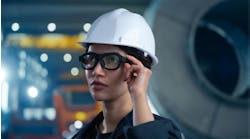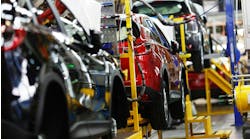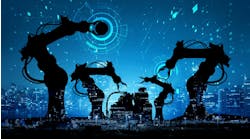How automation technologies are helping auto manufacturers in the pandemic economy
By Dijam Panigrahi, co-founder and COO of Grid Raster Inc.
The shifting business climate in 2020 resulting from the coronavirus pandemic is forcing
a larger number of businesses to implement automation technologies for their production, distribution and fulfillment facilities.
This is becoming more true each day.
The pandemic’s effects on the economy, as well as that of individual businesses and their bottom lines, has added pressure to companies that need to become more efficient with their factory operations. And while many of these manufacturing facilities continue to rely heavily on human labor, an increasing number of locations have begun to implement automation technologies that include augmented reality and virtual reality (AR/VR) as a way to speed efficiencies, lower costs, and minimize human touchpoints for social distancing.
Larger investments in automation
The statistics show that this shift is picking up momentum. Over half of the warehouse operators who participated in a recent survey commissioned by Honeywell, reported they’re more willing to invest in automation because of the pandemic. Other verticals, particularly aerospace manufacturing, show that 42% of manufacturers in this sector are looking to implement automation tech such as AR/VR in the next twelve months.
The business benefits of increased productivity and reduced costs are obviously a boon to the bottom line. However, other leading drivers show that these technologies are helping to enhance new social-distancing policies enacted during the early days of the pandemic.
The automotive industry saw this first-hand, as many car manufacturers completely shut down or scaled back their operations in March after the widespread outbreak of COVID-19. This shutdown had a profound impact on the industry, as the supply of new cars dried up, forcing many car buyers to instead opt for used cars, which subsequently saw their prices rise precipitously.
The automotive industry had to deal with a second blow this summer, as many plant workers decided to remain home for fear of catching the virus. This placed additional pressure on production lines, just as the economy began to feel a restart across the country.
Increased flexibility across manufacturing facilities
The COVID-19 pandemic has illustrated the need for more operational flexibility where advanced technology and automation can be applicable. In addition, the ability to scale up or down quickly in order to meet project deadlines (without impacting hourly shifts) has further helped with manufacturing efficiency.
Technologies such as robotics and automation have greatly increased across plant floors, especially as the need to adhere to tighter supply chain and logistics demands has been paramount this summer. And while these have been growing in importance for carmakers, other manufacturers in the consumer goods, cleaning products and consumer electronics spaces have also been more reliant on emerging technologies to meet the demands of online shopping.
Cloud-based automation technologies proving pivotal
AR/VR, in particular, has been showing great promise for auto manufacturers for a number of uses. The technology allows automotive designers and manufacturers to conduct real-time 3D visualization and CAD for design and manufacturing. We’re seeing faster training cycles. Professionals can work, remotely, at drastically higher levels. In fact, some manufacturers report minimized errors using AR/VR through instructions overlay, remote assistance, and better planning and visualization. This has resulted in a boosted productivity. AR/VR technologies provide significant time savings to the manufacturing build process through optimized decision process, which positively impacts the entire OODA Loop (Observe, Orient, Decide, Act).
One caveat facility managers must take into account is that not all automation technologies are created equally. It is important to pay close attention to the technology infrastructure and to choose a platform that is cloud-enabled so that projects can truly scale when needed. Manufacturers are overcoming their growth limitations by leveraging cloud-based (or remote-server based) AR/VR platforms powered by distributed-cloud architecture and 3D vision-based AI. These cloud platforms provide the desired performance and scalability to drive innovation in the industry at speed and scale.



